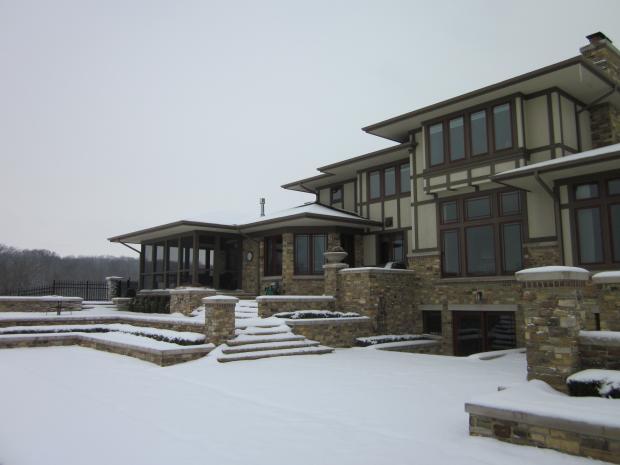Is Your Home Ready for Winter?
See if We Have Top-Rated
Home Maintenance in Your Area

Start by checking the roof and the gutters. Check your roof for loose, curled or missing shingles. If you see problems or have seen evidence of a leak, this is the time to take care of it. The next time you have a heavy rain, put on your coat and boots and step out into the yard. Look at how the water flows. If the gutters overflow they either need cleaning, realigning, or replacement with larger gutters.
On a cool evening, go ahead and turn on your furnace to make sure it works before you really need it! If you have a forced air system, you may briefly notice a burning smell. This is simply some of the dust in the ducts being burnt off by the first blast of hot air. While you're checking out the furnace, make sure you change the air filters.
If you have a humidifier, clean it thoroughly in accordance with the manufacturer's recommendations. Failure to do so can cause health problems due to air-borne bacteria: This is also a good time to consider increasing the insulation you have in your attic, walls and basement. Likewise, consider replacing old single-pane windows. In addition to saving you a lot of money on fuel bills, the new windows will be easier to open and close, much easier to clean, and potentially maintenance free.
Here are answers to some of the most commonly asked questions about a pre-winter checkup:
Q: I usually have my gutters cleaned once each fall after the leaves are down. My roofer says I should have it done more often. Is that necessary?
A: Your roofer is probably right. Gutter cleaning is one of the lowest-cost maintenance chores you can have done on your home, yet failure to keep gutters clean is a primary cause of many serious problems, such as rotted wood, premature paint failure, wet basements, and termites. If you wait until the fall season is over, your gutters are probably effectively clogged for at least two months each fall. During that time, water is flowing where it shouldn't, eroding the soil around your home and penetrating the side of the house and the foundation. For most homes, a minimum cleaning schedule should be once mid-fall, once after the leaves are down, and once more in the spring.
Q: Is it really necessary to have my furnace checked out by a professional each fall?
A: The best thing to do is refer to the manufacturer's recommendation. If you can't find the paperwork that came with the furnace, get the model number and name of the manufacturer from the labels on the furnace and call 1-800-555-1212 to ask for the 800 number for your manufacturer. Then call the manufacturer to ask what is recommended. The primary advantage of having the system checked is that it reduces the odds of a breakdown during a cold snap in the dead of winter.
Q: Near the downspouts, I see little piles of large-grained sand. Where is this coming from?
A: Probably from your roof shingles. Roof shingles are commonly coated with this sand to protect them from the damaging effects of the sun. When shingles are nearing the end of their useful life, the granules start to break off during heavy rains. While the sand is not likely to hurt anything in your yard or garden, its presence is a strong indication that it won't be long until you will need a new roof.
Q: From what I hear, most people turn off their outdoor faucets for the winter. I have never done this and have never had a problem. Can I assume that my home isn't susceptible to this problem?
A: You can probably assume your home is less susceptible to outside faucets freezing and pipes bursting, but don't assume it can't happen to you. There are many variables besides the absolute temperature outside. Wind speed and direction, what parts of your home get sunlight in winter, the location and density of shrubs, the age of your pipes and faucets, what materials these fixtures are made of, and many other factors play a role.
It is quite likely that your faucets have frozen many times without the pipes actually bursting. Freezing puts a lot of stress on the pipes and they are likely to be getting weaker over time. You would be smart to start turning your faucets off for the winter. The main reason is that a burst pipe can be incredibly destructive. It usually involves a lot of water and can destroy a plethora of walls, floors, and furnishings in a very short period of time.
More Tips & Advice For Your Home
- Related Articles
- Recent Articles

